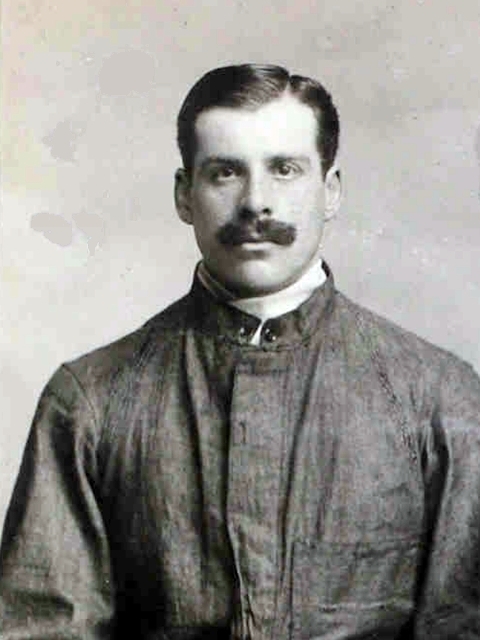Richard Crawshay

Biographical information
| Roles | Competed in Olympic Games |
|---|---|
| Sex | Male |
| Full name | Richard Oakes•Crawshay |
| Used name | Richard•Crawshay |
| Born | 12 April 1882 in Kensington, England (GBR) |
| Died | 31 January 1953 in Clarens, Vaud (SUI) |
| Affiliations | Magrini's School of Arms, London (GBR) |
| NOC |  Great Britain Great Britain |
Biography
Richard Oakes Crawshay was the son of Richard Frederick Crawshay, a wealthy South Wales iron works and colliery owner. He was also a former High Sherriff of Brecon and, when he died in 1903, Crawshay junior inherited a large part of his £500,000 estate (worth over £61 million in 2020).
Crawshay became a Gentleman Cadet at the Royal Military College in 1901 before being made a second-lieutenant in the Grenadier Guards. He resigned his commission, however, on 13 July 1904. After that it would appear he enjoyed the high life and shared his time between homes in London, France, Italy, and Switzerland, where he was living when the family home in Wales was destroyed by fire in 1906. Crawshay was also an aviator, and in 1914 flew the English Channel with Miss Eleanor Trehawke Davies as his passenger. Two years earlier she had become the first woman to fly the Channel, albeit as a passenger.
As a fencer, Crawshay was runner-up in the sabre event at the annual fencing competition of the German Gymnastics Society in 1911. The following year he finished joint fourth in the British Sabre Championship, before going to the Stockholm Olympics with the British team. Crawshay died at his luxury Swiss Alpine Villa in 1953.
Results
| Games | Discipline (Sport) / Event | NOC / Team | Pos | Medal | As | |
|---|---|---|---|---|---|---|
| 1912 Summer Olympics | Fencing |  GBR GBR |
Richard Crawshay | |||
| Sabre, Individual, Men (Olympic) | ||||||
| Sabre, Team, Men (Olympic) | Great Britain | =7 |